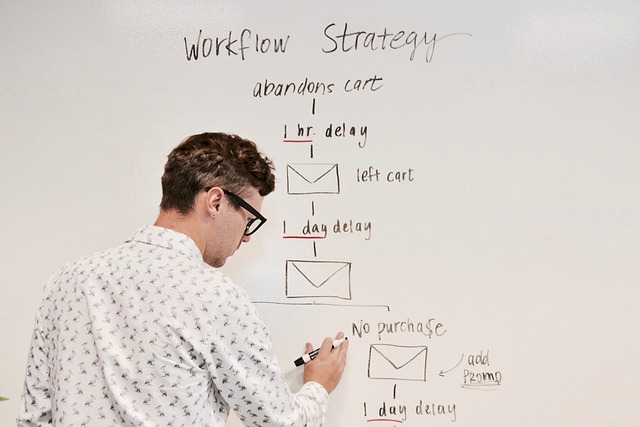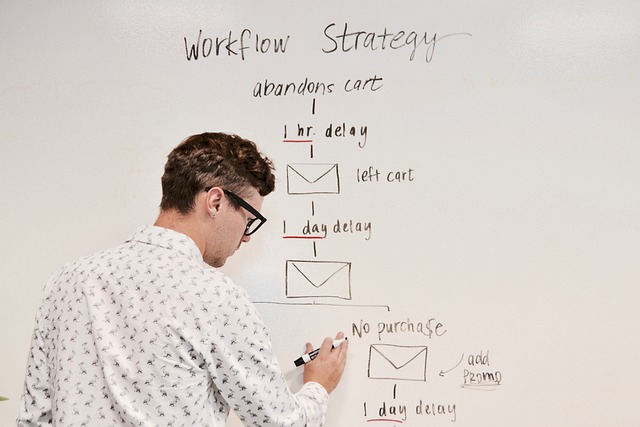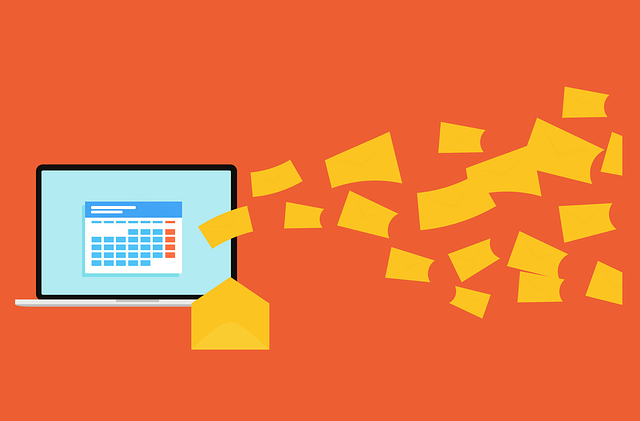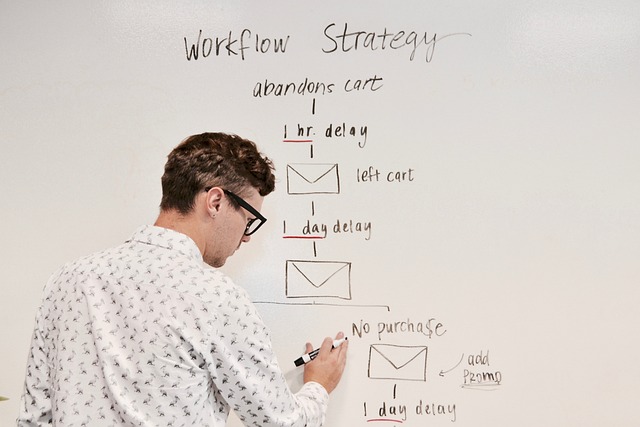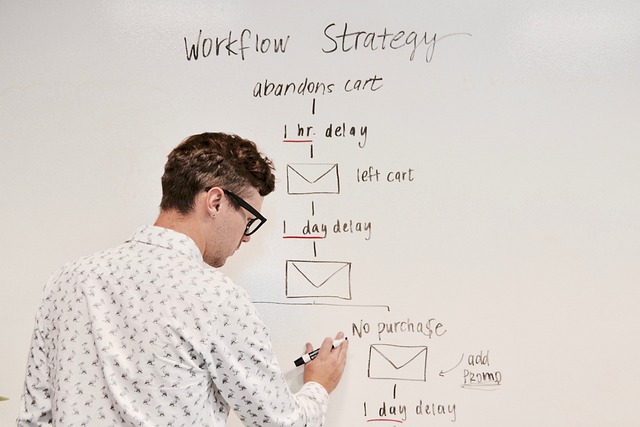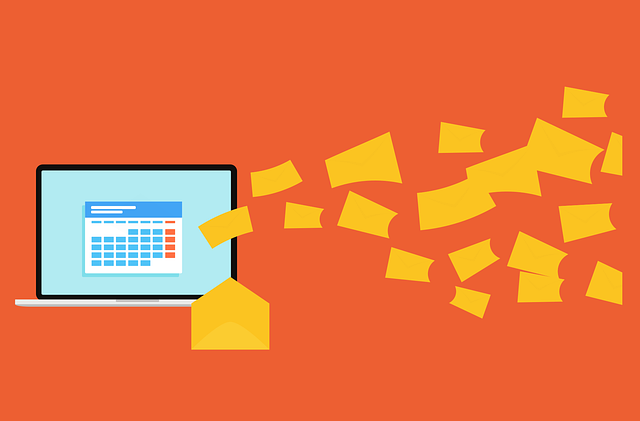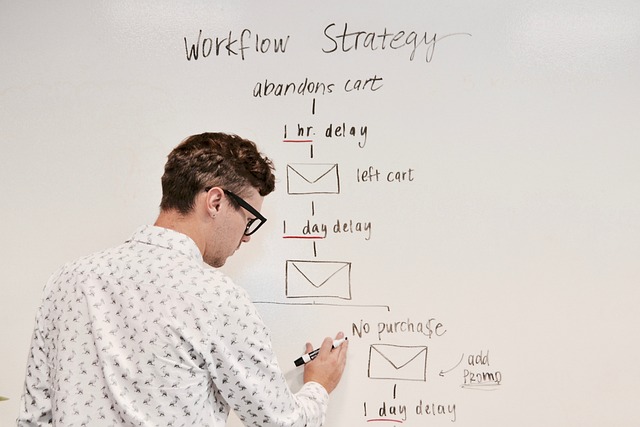You’ve heard the theory before: email marketing is dead. But here’s the truth: it’s far from it. In fact, email marketing is not only alive and well, but it’s evolving at an unprecedented pace.
The future of email marketing lies in automation, a game-changing strategy that allows you to reach your audience with personalized, timely, and relevant messages without lifting a finger. With the rise of automation, you can say goodbye to generic, one-size-fits-all emails and hello to a highly targeted and engaging communication approach.
By leveraging automation tools, you can effortlessly nurture leads, onboard new customers, and foster long-lasting relationships.
This article will explore the benefits of email automation, the types of automated emails you can send, how to implement automation tools, tips for creating captivating content, and the integration of email automation with other marketing channels.
Get ready to embrace the future of email marketing and revolutionize your customer communication.
Key Takeaways
- Automation is the future of email marketing, allowing for personalized, timely, and relevant messages.
- Effective email automation requires choosing the right platform, optimizing strategies, and regularly reviewing and updating automated workflows.
- Personalization and effective subject lines maximize the impact of email campaigns, while engaging email content sparks curiosity and drives engagement.
- Integration with other marketing channels creates a cohesive customer experience, and AI and machine learning enhance email automation integration.
Benefits of Email Automation
Imagine being able to effortlessly reach your target audience with personalized emails that are sent automatically, saving you time and ensuring that your messages are always timely and relevant. With email automation, you can achieve just that.
By implementing personalization strategies, you can tailor your emails to each individual recipient, making them feel valued and increasing the likelihood of engagement. Furthermore, automation allows you to measure the return on investment (ROI) of your email campaigns more effectively. You can track open rates, click-through rates, and conversions, giving you valuable insights into the effectiveness of your email marketing efforts.
By leveraging automation, you can optimize your campaigns and make data-driven decisions to continually improve your results.
Now, let’s explore the different types of automated emails that you can use to maximize your marketing efforts.
Types of Automated Emails
While browsing the internet, you suddenly receive a personalized email that perfectly matches your interests and needs, making you feel like the sender has read your mind. Personalization in automated emails is one of the key types of automated emails that can greatly impact the success of your email marketing campaigns.
By tailoring the content of your emails to each individual recipient, you can increase engagement and conversion rates. Additionally, measuring the effectiveness of automated emails is crucial in determining whether your strategies are working or need adjustment.
By tracking open rates, click-through rates, and conversion rates, you can gain valuable insights into the performance of your emails and make data-driven decisions. With the power of personalization and effective measurement, automated emails can truly revolutionize your marketing efforts.
As you delve into implementing email automation tools, you can further enhance the success of your campaigns.
Implementing Email Automation Tools
When it comes to implementing email automation tools, choosing the right email marketing platform is crucial. Look for a platform that offers a user-friendly interface, robust features, and excellent customer support.
Setting up automated workflows and triggers is another key point to consider – this allows you to send targeted and personalized emails based on specific actions or events.
Finally, don’t forget about A/B testing and analytics, as they provide valuable insights to optimize your email campaigns and improve your overall marketing strategy.
Choosing the Right Email Marketing Platform
To effectively streamline your email marketing efforts, it’s crucial to choose the right email marketing platform. When comparing different platforms, there are several factors to consider. Take a look at the table below for a quick comparison:
| Platform | Pricing | Features |
|---|---|---|
| Platform A | $20/month | Advanced automation |
| Platform B | $30/month | Robust reporting |
| Platform C | $25/month | Easy integration |
When choosing an email marketing platform, pricing is an important consideration, but it should not be the sole factor. Evaluate the features offered by each platform and determine which ones align with your marketing goals. Consider whether advanced automation, robust reporting, or easy integration is more important for your business. Once you’ve chosen the right platform, you can proceed to the next step of setting up automated workflows and triggers to maximize the effectiveness of your email campaigns.
Setting up Automated Workflows and Triggers
Once you’ve selected the perfect email marketing platform, it’s time to unleash the power of automated workflows and triggers to revolutionize your campaign efficiency.
Benefits of email personalization: Personalizing your emails can significantly boost engagement and conversion rates. By segmenting your audience based on their preferences and behaviors, you can deliver tailored content that resonates with each individual subscriber.
Effective email subject lines: Crafting compelling subject lines is crucial for grabbing your audience’s attention and increasing open rates. Use concise and attention-grabbing language that highlights the value or urgency of your email content.
Implementing automated workflows and triggers allows you to deliver highly targeted and personalized emails at scale. By leveraging the benefits of email personalization and crafting effective subject lines, you can maximize the impact of your email marketing campaigns.
In the next section, we’ll dive into the importance of A/B testing and analytics for optimizing your email strategy.
A/B Testing and Analytics
Maximize the impact of your campaigns by harnessing the power of A/B testing and analytics to optimize your strategy.
A/B testing allows you to compare different versions of your emails and determine which one resonates better with your audience. By testing different subject lines, email designs, or call-to-action buttons, you can identify the elements that drive higher open rates, click-through rates, and conversions.
Additionally, analytics provide valuable insights into the effectiveness of your email marketing efforts. By measuring key metrics such as delivery rates, bounce rates, and unsubscribe rates, you can gauge the success of your campaigns and make data-driven decisions to improve your results.
Utilizing robust A/B testing strategies and analyzing email marketing effectiveness will help you create engaging automated email content that truly connects with your audience.
Creating Engaging Automated Email Content
Engage your audience with captivating automated email content that sparks their curiosity and leaves them wanting more. To achieve this, it’s crucial to implement personalization strategies and optimize email deliverability.
Customize your emails based on your subscribers’ preferences and behaviors. Segment your audience and send tailored content that resonates with their interests. Use dynamic content to personalize your emails even further, such as including their name or relevant product recommendations.
Additionally, ensure your emails are delivered successfully by monitoring your sender reputation, using a reliable email service provider, and implementing best practices for email deliverability.
By creating engaging and personalized automated email content, you can connect with your audience on a deeper level and drive higher engagement. This sets the foundation for seamless integration with other marketing channels, allowing you to deliver a cohesive and impactful customer experience.
Integration with Other Marketing Channels
To fully unleash the power of your automated email campaigns, think of them as the conductor of a symphony, seamlessly integrating with other marketing channels to create a harmonious and impactful customer experience.
However, integration challenges with emerging marketing channels can pose a hurdle. With the rise of new platforms and technologies, it becomes increasingly important to ensure that your automated emails work seamlessly with other channels such as social media, SMS, and chatbots. This integration allows for a cohesive and consistent brand experience across touchpoints, maximizing your reach and engagement.
Additionally, the impact of AI and machine learning on email automation integration can’t be overlooked. These technologies enable advanced personalization and segmentation, allowing you to tailor your messaging based on customer behavior and preferences.
By leveraging the power of integration and technology, your automated email campaigns can become even more powerful and effective.
Now, let’s explore the best practices for email automation.
Best Practices for Email Automation
When it comes to email automation, there are a few best practices that can greatly improve your results.
First, segmenting your email list allows you to send targeted messages to specific groups, increasing the relevance and effectiveness of your emails.
Second, regularly reviewing and updating your automated workflows ensures that they’re still aligned with your goals and delivering the desired outcomes.
Lastly, maintaining a clean and engaged email list is crucial for maintaining deliverability and preventing your emails from being marked as spam.
By following these practices, you can maximize the impact of your email automation efforts and achieve better results.
Segmenting Your Email List
Once you’ve gathered enough data, you can start segmenting your email list to ensure you’re delivering personalized content to each subscriber. This is crucial for effective email marketing.
By segmenting your list, you can tailor your messages to specific groups based on their interests, demographics, or behaviors. This allows you to create personalized campaigns that resonate with your audience and increase engagement.
To implement successful personalization strategies, consider the following:
-
Use a subscriber’s browsing history to recommend products or content that align with their interests.
-
Segment subscribers based on their engagement levels to send targeted re-engagement emails and win back inactive subscribers.
Segmenting your email list not only improves personalization but also optimizes email deliverability. By sending relevant content to engaged subscribers, you can avoid spam filters and increase the chances of your emails reaching the inbox.
Regularly reviewing and updating automated workflows is the next step to ensure your email marketing stays effective.
Regularly Reviewing and Updating Automated Workflows
Don’t miss out on optimizing your email campaigns! Regularly reviewing and updating automated workflows is essential for ensuring your messages stay relevant and effective.
By reviewing the effectiveness of your automated workflows, you can identify areas where improvements can be made to optimize performance. Analyze the open rates, click-through rates, and conversion rates of your automated emails to determine their impact on your audience. Look for trends and patterns that can help you tailor your messages to better resonate with your subscribers.
Make necessary adjustments, such as updating content, personalization, or timing, to maximize engagement and conversion. By continuously reviewing and updating your automated workflows, you can stay ahead of the competition and provide your subscribers with valuable content that drives results.
Now, let’s move on to the next section about maintaining a clean and engaged email list.
Maintaining a Clean and Engaged Email List
Now that you’ve established a solid foundation for your automated workflows, it’s time to turn your attention to maintaining a clean and engaged email list.
Email list hygiene is crucial for the success of your email marketing campaigns. By regularly cleaning your list and removing inactive or unengaged subscribers, you ensure that your messages reach the right audience and avoid being flagged as spam. This not only improves deliverability but also increases email open rates, as you’re targeting individuals who are genuinely interested in your content.
To achieve this, consider implementing strategies such as re-engagement campaigns, where you encourage inactive subscribers to interact with your emails again.
By focusing on a clean and engaged email list, you can maximize the impact of your automated email marketing and drive better results for your business.
Frequently Asked Questions
How does email automation impact email deliverability and open rates?
Email automation benefits email deliverability and open rates by streamlining the process, ensuring timely and relevant content. To maximize effectiveness, follow best practices for email automation.
Personalize messages to engage recipients, using their names and targeted content. Segment your audience based on interests and behavior, sending tailored emails. Implement A/B testing to optimize subject lines, email design, and call-to-action buttons.
Monitor email performance regularly and make adjustments as needed. By leveraging these strategies, you can boost deliverability and open rates for successful email campaigns.
What are some common challenges that businesses face when implementing email automation tools?
Implementing email automation tools can be a daunting task for businesses. Some common challenges you may face include integrating the tools with existing systems, ensuring data accuracy, and creating engaging and relevant content.
To overcome these challenges, it’s important to follow best practices such as segmenting your audience, personalizing your emails, and testing your campaigns regularly.
Remember, "Rome wasn’t built in a day," so take your time, strategize, and gradually implement automation to maximize its benefits.
How can businesses ensure that their automated emails remain personalized and relevant to their subscribers?
To ensure personalized and relevant automated emails, businesses can use personalization techniques and email segmentation.
By segmenting their subscriber list based on demographics, preferences, or behavior, businesses can send targeted messages that resonate with each group.
Additionally, businesses can personalize their emails by including the recipient’s name, past purchase history, or personalized recommendations.
These techniques create a more tailored experience for subscribers, increasing engagement and ultimately driving better results for the business.
What are some effective strategies for measuring the success and ROI of email automation campaigns?
To measure the effectiveness and ROI of your email automation campaigns, you need to navigate through the murky waters like a skilled sailor. Start by tracking key metrics such as open rates, click-through rates, conversion rates, and revenue generated.
Dive deep into the data to uncover insights and trends, allowing you to optimize your campaigns for maximum impact. Don’t forget to set clear goals and benchmarks to gauge success.
With these best practices, you’ll navigate the seas of email automation with confidence and see your ROI soar.
Are there any potential drawbacks or risks associated with relying too heavily on email automation for marketing purposes?
Relying too heavily on email automation for marketing purposes can have potential drawbacks and risks. Excessive email automation may lead to impersonal and generic messages, resulting in a decrease in customer engagement and response rates.
It can also lead to an over-reliance on technology, neglecting the importance of human interaction. Additionally, there is a risk of triggering spam filters or being marked as spam by recipients, damaging your brand reputation.
Therefore, it’s crucial to find a balance between automation and personalized, human-driven communication.
Conclusion
So there you have it, the future of email marketing: the rise of automation. It’s funny, isn’t it? We’ve spent all this time perfecting our email marketing strategies, trying to connect with our audience on a personal level, only to hand it all over to robots.
But hey, who needs human touch when you can have perfectly timed, personalized emails sent out automatically? With the benefits, types, and tools of email automation at our disposal, it’s clear that this is the direction we’re heading.
Embrace the future, my friend, and let the machines do the talking.

